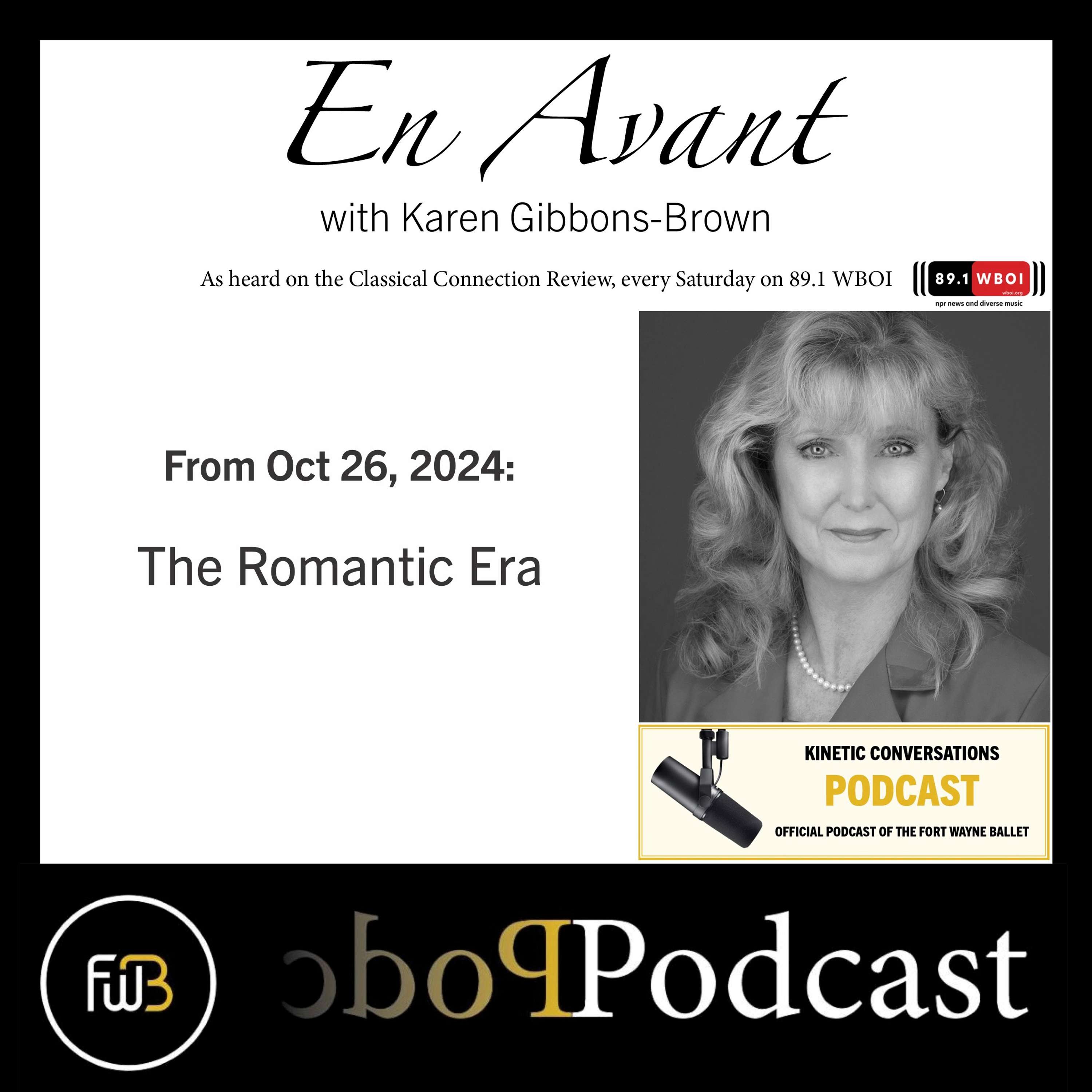En Avant with Karen Gibbons Brown can be heard every Saturday night on the Classical Connection Review on 89.1 WBOI.
Welcome to En Avant, a ballet discussion brought to you by Fort Wayne Ballet and the Kinetic Conversations podcast.I'm Fort Wayne Ballet Artistic Director, Karen Gibbons-Brown.
Last week, we spoke about the beginnings of classical ballet under King Louis XIV. There were some markers in our world that indicate how ballet grew.
We have the comedy ballet, we have the ballet which generally represented some sort of political statement that was brought to the king through dance as opposed to through words, so it would be a little softer for him to take.
It would be easier for him to understand the happenings in the world around him.Being somewhat isolated as the king, he needed to somehow keep his finger on the pulse of his people.
So we have some of these ballets that represented political statements as well as just dance for entertainment.The entertainment form began to take what we call the story ballet or the ballet d'action, action of the ballet.
That became quite the formula for performances as we move into the Romantic Era.The Romantic Era is the time when we recognize that women finally became more important in dance.Prior to that, only men could be presented publicly.
And by that, we mean that if there was a part for a young lady in the script or the storyline, it was often played by a young man.
The queen would have her own ballet company full of women who did exactly the same thing the men did, however, not publicly. Women were allowed to watch the ballets, but not perform in them until the late 1700s.
As we move into the Romantic era, that presented an opportunity for the women of the world that were trained in dance as well, to present lovely works with them being the leads in the ballets.
The Romantic era brought those bell-shaped tutus that you see dancers wear, called romantic tutus, specific to the time period.They wore their hair pinned back in a more specific way called the romantic bun.
And then we also had the development of pointe shoes so women could stand up on their toes.The pointe shoes of the day were not like the pointe shoes of today.They were soft satin slippers with darned toes
to stiffen them just a bit so the ladies could rise up on point ever so slightly, but yet not able to suspend the movements for very long.
The men during this time period actually took a second seat to the women, and we call those the lift and toters.They would lift the women so the women had a sense of etherealness and spirit-like quality.
These ballets in the time period were generally two acts.The first act of the ballet would represent people that were living, and the second act often had a spirit-like theme to it.Our perfect example of that would be the ballet Giselle.
We consider that the quintessential romantic ballet. The first act, there are people that live in a village, and they each have characters.In the second act, Giselle is brought up from her grave, and she is initiated to be a willie.
This is, again, a typical example.A willie is a young woman who has died of a broken heart prior to her wedding day. So she's buried in her wedding dress.So as these spirits rise, they're in their white dresses or their wedding dresses.
They vowed to dance all men that come into their grave land or the forest to death.I don't want to spoil the story, but in the story Giselle chooses not to be a willy, so her spirit goes back into the grave to lie there forevermore.
This is based on a poem that was popular in the day by Theophile Gautier. In this time period, people very much believed in the occult and something supernatural, so often these ballets had that supernatural effect.The Willys are all in white tutus.
We call this a white ballet, and the definition of a white ballet or ballet blanc would be a ballet with one act all in white tutus.
Thank you so much for listening today on En Event, and we'll look forward to speaking with you next time, continuing the romantic era of ballet.
Anna Vaughn is brought to you by Kinetic Conversations, the official podcast of Fort Wayne Ballet.Our closing music is by John Dawkins.Fort Wayne Ballet is performing Director's Choice, a repertoire set, November 8th and 9th at the Auer Center.
Kinetic Conversations podcast is available on most audio streaming platforms.
 Sign in
Sign in Sign in
Sign in Sign in
Sign in










